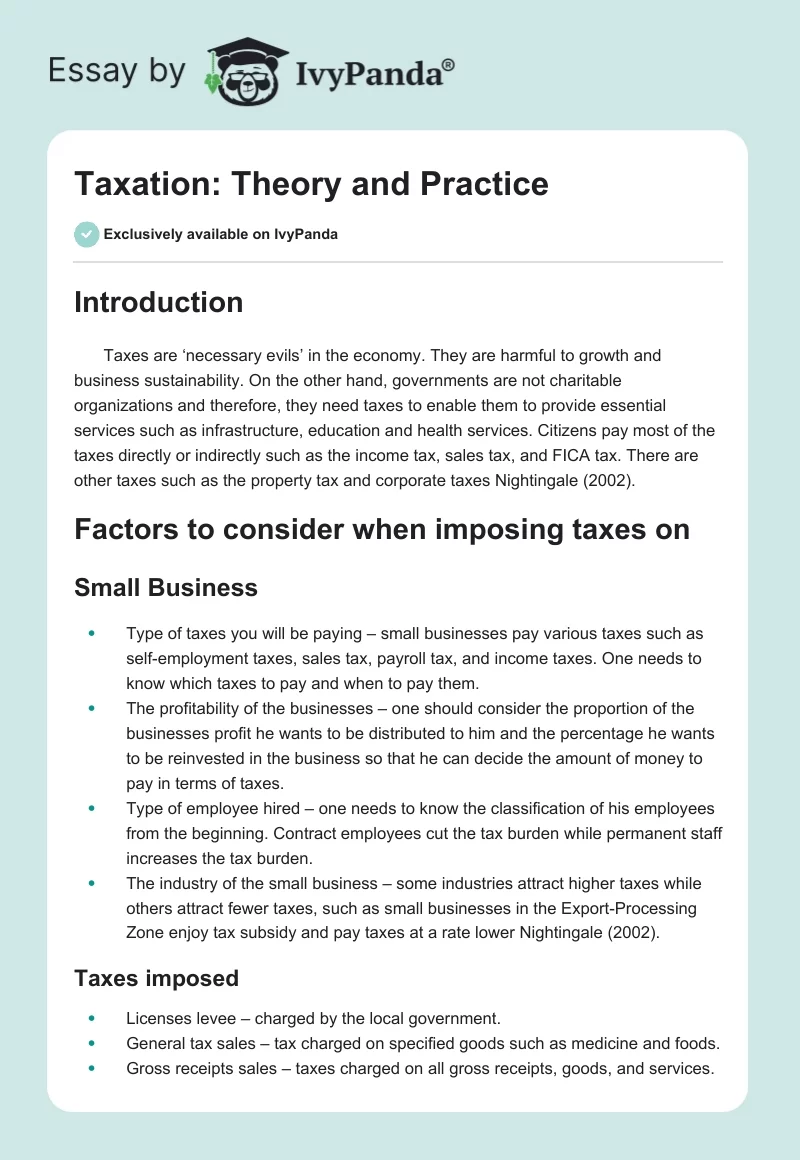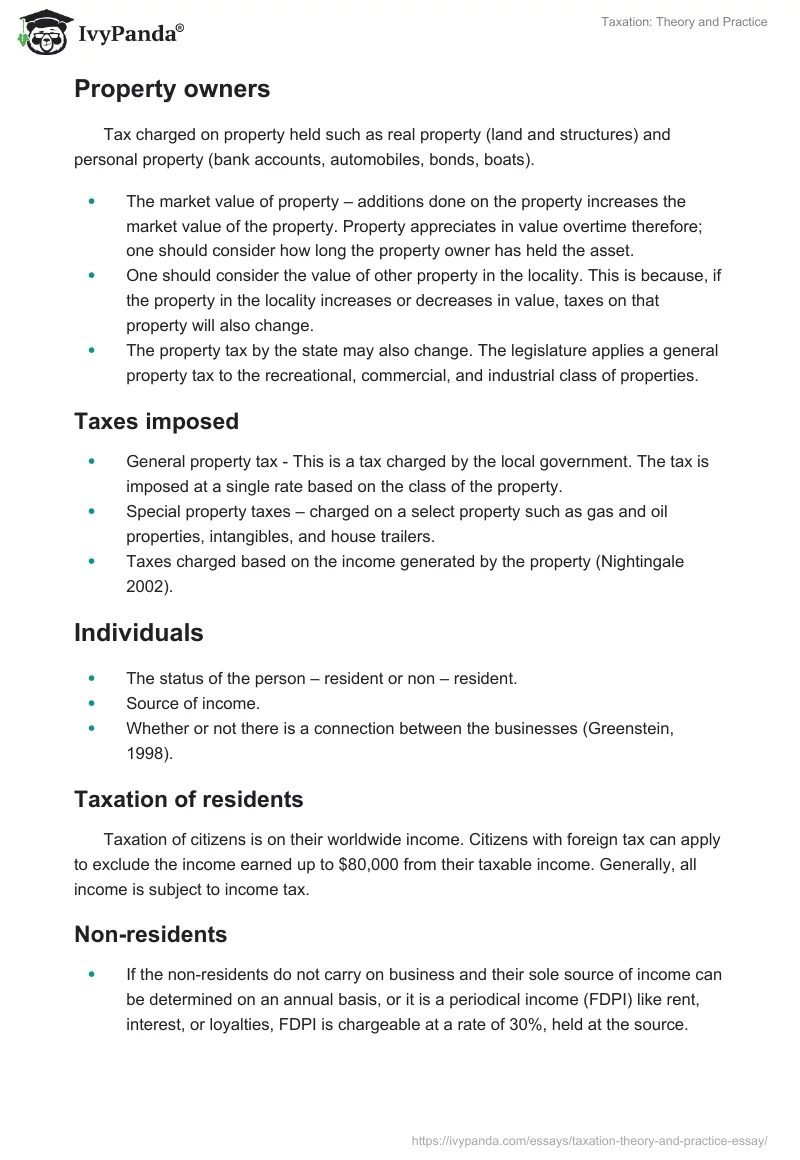Introduction
Taxes are ‘necessary evils’ in the economy. They are harmful to growth and business sustainability. On the other hand, governments are not charitable organizations and therefore, they need taxes to enable them to provide essential services such as infrastructure, education and health services. Citizens pay most of the taxes directly or indirectly such as the income tax, sales tax, and FICA tax. There are other taxes such as the property tax and corporate taxes Nightingale (2002).
Factors to consider when imposing taxes on
Small Business
- Type of taxes you will be paying – small businesses pay various taxes such as self-employment taxes, sales tax, payroll tax, and income taxes. One needs to know which taxes to pay and when to pay them.
- The profitability of the businesses – one should consider the proportion of the businesses profit he wants to be distributed to him and the percentage he wants to be reinvested in the business so that he can decide the amount of money to pay in terms of taxes.
- Type of employee hired – one needs to know the classification of his employees from the beginning. Contract employees cut the tax burden while permanent staff increases the tax burden.
- The industry of the small business – some industries attract higher taxes while others attract fewer taxes, such as small businesses in the Export-Processing Zone enjoy tax subsidy and pay taxes at a rate lower Nightingale (2002).
Taxes imposed
- Licenses levee – charged by the local government.
- General tax sales – tax charged on specified goods such as medicine and foods.
- Gross receipts sales – taxes charged on all gross receipts, goods, and services.
Property owners
Tax charged on property held such as real property (land and structures) and personal property (bank accounts, automobiles, bonds, boats).
- The market value of property – additions done on the property increases the market value of the property. Property appreciates in value overtime therefore; one should consider how long the property owner has held the asset.
- One should consider the value of other property in the locality. This is because, if the property in the locality increases or decreases in value, taxes on that property will also change.
- The property tax by the state may also change. The legislature applies a general property tax to the recreational, commercial, and industrial class of properties.
Taxes imposed
- General property tax – This is a tax charged by the local government. The tax is imposed at a single rate based on the class of the property.
- Special property taxes – charged on a select property such as gas and oil properties, intangibles, and house trailers.
- Taxes charged based on the income generated by the property (Nightingale 2002).
Individuals
- The status of the person – resident or non – resident.
- Source of income.
- Whether or not there is a connection between the businesses (Greenstein, 1998).
Taxation of residents
Taxation of citizens is on their worldwide income. Citizens with foreign tax can apply to exclude the income earned up to $80,000 from their taxable income. Generally, all income is subject to income tax.
Non-residents
- If the non-residents do not carry on business and their sole source of income can be determined on an annual basis, or it is a periodical income (FDPI) like rent, interest, or loyalties, FDPI is chargeable at a rate of 30%, held at the source.
- If the non-residents conduct business, they file a tax return, Form 1040NR. The income connected to the business is subjected to progressive taxes similar to those charged to residents.
The income level of people determines their taxation. Higher tax is chargeable on high-income earners and lower tax charged on low-income earners (Greenstein, 2012).
Taxes imposed
They include personal taxes, Value Added Tax, imposed by the federal government and excise duty, customs duty and stamp duty imposed by the local government (Greenstein, 2012).
References
Greenstein, R. and Shapiro, I. (1998). New research findings on the effects of the earned income tax credit. Washington, DC: Center on Budget and Policy Priorities. Web.
Nightingale, K. (2002). Taxation: Theory and Practice. Boston: Financial Times/Prentice Hall.


